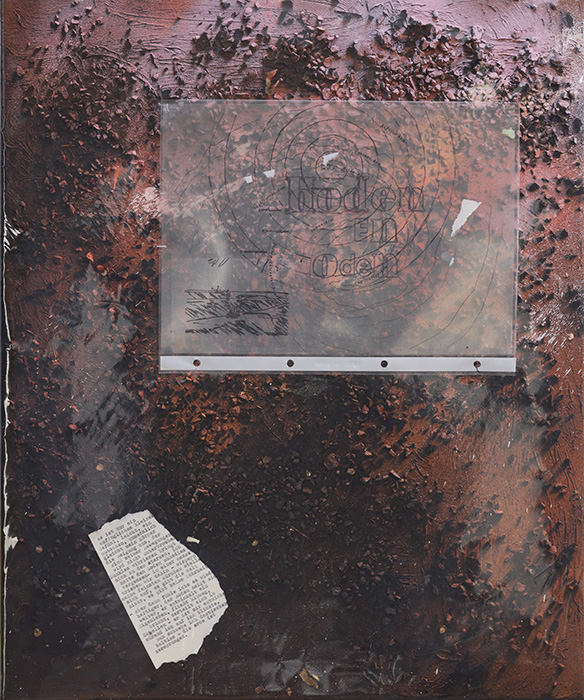Silke Albrecht
shattered earth
January 12 – March 2, 2019

On January 11, 2019 we will open at 7 p.m. our first exhibition in the New Year and at the same time the first exhibition with the painter Silke Albrecht (*1986 in Soest, lives and works in Düsseldorf).
Silke Albrecht studied between 2006 and 2010 with Prof. Michael van Ofen at the Art Academy Münster and between 2010 and 2015 at the Art Academy Düsseldorf with Prof. Andreas Gursky. In 2015 she finished her studies as a master student of Andreas Gursky.
Albrecht’s work focuses on an examination of the loss of a uniform view of the world in the context of contemporary geological, ecological and geopolitical problems. The exhibition title shattered earth suggests a fragmentation of the holistic view of a supposedly untouched planet Earth that has been engraved in collective visual memory since the famous “Blue Marble”-photograph. Albrecht’s paintings – and this term will still have to be discussed – can be understood as measures of a critical, in the double sense of criticizing and analyzing, attitude towards anthropocentrically shaped views of the world. This attitude can be seen not only in the title of the exhibition, but also in the titles of the paintings and their respective series; among other things, they are orientated towards concepts and idioms such as “powers of ten” (the powers of ten in mathematics, at the same time a film by Charles and Ray Eames from 1977), “terrestrial” (concerning the earth), “Blood and Soil” (the relation of the Germans to “their” soil so fatefully asserted by the National Socialists) or “modern dream” (as a short version of the description of man’s progressive goal orientation in modernity). The idea of a “disintegrated” earth makes us equally aware of the threatening and – through the modern human being and his “plans for modernity” (according to Bruno Latour in his book Down to Earth [2017]) – already realized risks of our living space. These are accompanied by a further bursting, that of the possibility of a holistic, objectifiable image that can be made of the Earth. One implication of this problem – and this is how Latour described it – is that man can no longer position himself dichotomically against “nature” in the “anthropocene” (a term brought into play in 2000 by two scientists as a proposal to name a new geochronological epoch), but instead is complexly intertwined with it. In contrast to this, there is the modern view of the Earth from space, a view that only supposedly allows the Earth to be experienced and perceived as a whole. For the distance that makes the Earth seem to become the object (not least through means such as aerial photography, the suggestions of Google Earth, films such as Powers of Ten) decreases our immediate proximity, which we cannot escape in the end.
The works of Silke Albrecht can only be understood against this background. The individual series describe the focal points of this thematic complex: In the terrestrial-works, schematically drawn poles of the earth and its ice masses appear – as pictorial elements – together with plastic bags that can stand for the pollution of the oceans, as well as tote-bags that imply a possible (partial) solution to this problem (and also claim this with advertising slogans such as “Fair-Trade” or “Back to Nature”). The poles can be read as metaphors for the globe, the vulnerable and wounded territory to be preserved. Albrecht has collaged stills of the film into her powers of ten-works. Man here is the interface, the zero point, from which the journey into the universe or atomic structures begins. Over these collaged images Albrecht draws an image of the man from powers of ten and, it seems, galactic dust. In the paintings of the shattered earth-series, Albrecht relates materials such as metals, shreds of paper, transparent and plastic films and shoe parts to one another, without producing a coherent whole with unambiguous interpretative associations. Albrecht has carried out a kind of recycling of studio materials/remnants. For the two Blood and Soil-works, Albrecht used printouts of stills from the video Welcome to the Anthropocene (2012, by Felix Pharand-Deschenes and Owen Gaffney), which shows a computer simulation of the globe. A voice-over text and a graph illustrate how, since industrial revolution, man has intervened in the earth system in a transforming way through, among other things, technical, energetic and agrarian developments. This graph plunges into a black hole in Blood and Soil (2), which offers no visual information and can thus be read as a metaphor for the possibly given groundlessness of our situation. In Blood and Soil (3), the images of the Earth are threatened by a flash flood of colors and stones, as if the earths were falling over the entire image of the Earth.
We have already questioned above whether Silke Albrecht’s works shown in shattered earth can be described as “paintings” in the narrower sense of the word. For they are not forms and colors painted on canvas with a brush. Albrecht also works with the means of collage, asessemblage, sewing and embroidery. She pours, she wipes and she draws on the canvas. What is decisive, however, is that on the one hand it is about highly effective, impressive and convincing pictures on canvas, which partly exceed the two-dimensions of the canvas in relief, and on the other hand about the joy of creating these works. This is connected with the content described in so far as Albrecht does not represent or depict objects, but rather creates them in a very concrete way. She brings herself in as an actuator, not as someone who depicts with a distance. Creation as an own act that produces the image (the pictorial world).